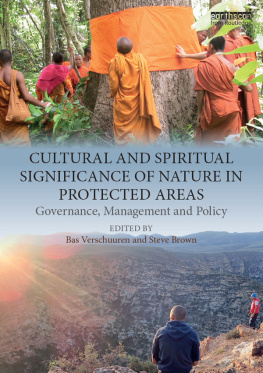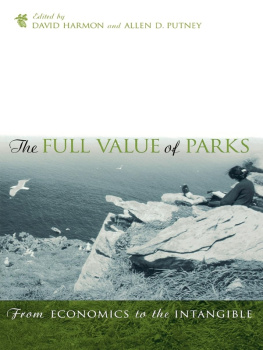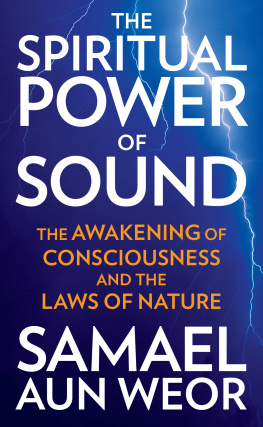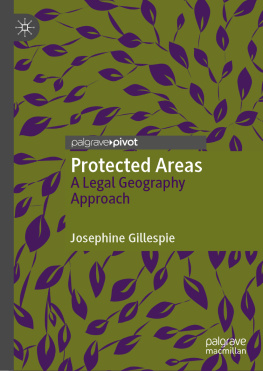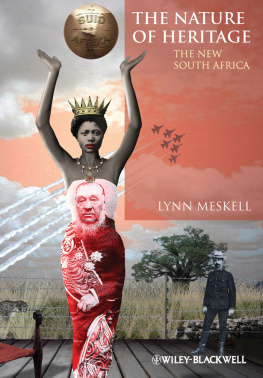CULTURAL AND SPIRITUAL
SIGNIFICANCE OF NATURE
IN PROTECTED AREAS
Cultural and spiritual bonds with nature are among the strongest motivators for nature conservation; yet they are seldom taken into account in the governance and management of protected and conserved areas. The starting point of this book is that to be sustainable, effective, and equitable, approaches to the management and governance of these areas need to engage with peoples deeply held cultural, spiritual, personal, and community values, alongside inspiring action to conserve biological, geological, and cultural diversity.
Since protected area management and governance have traditionally been based on scientific research, a combination of science and spirituality can engage and empower a variety of stakeholders from different cultural and religious backgrounds. As evidenced in this volume, stakeholders range from indigenous peoples and local communities to those following mainstream religions and those representing the wider public. The authors argue that the scope of protected area management and governance needs to be extended to acknowledge the rights, responsibilities, obligations, and aspirations of stakeholder groups and to recognise the cultural and spiritual significance that nature holds for people.
The book also has direct practical applications. These follow the IUCN Best Practice Guidelines for protected and conserved area managers and present a wide range of case studies from around the world, including Africa, Asia, Australia, Europe, and the Americas.
Bas Verschuuren is a freelance biocultural adviser and associate researcher at the Department of Sociology of Development and Change at Wageningen University, the Netherlands. He combines his experience in conservation projects with applied research on the cultural, spiritual, and sacred dimensions of nature in management and policy.
Steve Brown is an honorary associate with the Museum and Heritage Studies Program at the University of Sydney, Australia. His research interests include: conceptualising and operationalising place-attachment in heritage theory and practice; the integration of nature-cultures in the heritage management of protected areas; and the material culture of domestic homes and gardens.
CULTURAL AND
SPIRITUAL
SIGNIFICANCE
OF NATURE IN
PROTECTED AREAS
Governance, Management
and Policy
Edited by
Bas Verschuuren and
Steve Brown
First published 2019
by Routledge
2 Park Square, Milton Park, Abingdon, Oxon OX14 4RN
and by Routledge
711 Third Avenue, New York, NY 10017
Routledge is an imprint of the Taylor & Francis Group, an informa business
2019 selection and editorial matter, Bas Verschuuren and Steve Brown; individual chapters, the contributors
The right of Bas Verschuuren and Steve Brown to be identified as the authors of the editorial material, and of the authors for their individual chapters, has been asserted in accordance with sections 77 and 78 of the Copyright, Designs and Patents Act 1988.
All rights reserved. No part of this book may be reprinted or reproduced or utilised in any form or by any electronic, mechanical, or other means, now known or hereafter invented, including photocopying and recording, or in any information storage or retrieval system, without permission in writing from the publishers.
Trademark notice: Product or corporate names may be trademarks or registered trademarks, and are used only for identification and explanation without intent to infringe.
British Library Cataloguing-in-Publication Data
A catalogue record for this book is available from the British Library
Library of Congress Cataloging-in-Publication Data
A catalog record has been requested for this book
ISBN: 978-1-138-09118-4 (hbk)
ISBN: 978-1-138-09119-1 (pbk)
ISBN: 978-1-315-10818-6 (ebk)
Typeset in Bembo and Stone Sans
by Florence Production Ltd, Stoodleigh, Devon, UK
Paperback cover image credits
Top image: Cambodian Buddhist monks from the Monks Community Forest (MCF) in Oddar Meanchay province ordain a tree as a Buddhist monk in order to prevent illegal logging in the forest. This act is based on a Buddhist teaching that the Buddha could appear as a man, a woman, a dog, or a tree, for example, if any of these helped people achieve enlightenment. Photo credit: Alliance of Religions and Conservation, Chantal Elkin.
Bottom image: Christo Kleinbooi and Sherman Swarts from the local community outreach group Baviaanskloof Nature Awareness sharing a culturally significant nature experience at Sewefontein Mountain Spirit Camp in the Baviaanskloof Mega-Reserve, South Africa. The group and the camp are being developed to connect community members, students, and school groups to the land through meaningful nature experiences. Photo credit: Matthew J. Zylstra.
CONTENTS
Steve Brown and Bas Verschuuren
PART I
Concepts
Josep-Maria Mallarach, Fabrizio Frascaroli, Will Tuladhar-Douglas, Jonathan Liljeblad, Radhika Borde, Edwin Bernbaum, and Bas Verschuuren
Matthew J. Zylstra
Martin Palmer
John Studley and Peter Horsley
Kristal Buckley
Will Tuladhar-Douglas
Radhika Borde
Edwin Bernbaum
PART II
Policy and practice
Leticia Leito, Leanna Wigboldus, Gwenalle Bourdin, Tim Badman, Zsuzsa Tolnay, and Oscar Mthimkhulu
Steve Brown and Bas Verschuuren
Dave Pritchard
Josep-Maria Mallarach, Marta Mgica, Alberto de Armas, and Eullia Comas
Chantal Elkin, Sanjay Rattan, Soubadra Devy, and Ganesh Thyagarajan
PART III
Case studies
Chris Coggins, Jesse Minor, Bixia Chen, Yaoqi Zhang, Peter Tiso, James Lam, and Cem Gultekin
Medard Twinamatsiko, Mark Infield and Arthur Mugisha
James L. Flexner, Lamont Lindstrom, Francis Hickey, and Jacob Kapere
Fabrizio Frascaroli and Thora Fjeldsted
Steve Brown
Bas Verschuuren and Steve Brown
The work of natural and cultural heritage conservation continues to be enriched and challenged by the disciplinary specialisations and cultural backgrounds of its practitioners. Nowhere is this more evident than in the governance and management of protected and conserved areas. This situation has become increasingly evident to us, the editors of this volume, during our co-participation in professional workshops and academic conferences and during fieldwork undertaken together in the Mongolian Altai (, this volume). Our interactions have created opportunities to explore a number of current conservation questions; concerning, for example, how nature-culture integration might be better conceptualised and how different, disciplinary-based value sets come into playand can become contestedin protected area management. For us, deep reflection and academic inquiry are necessary in building interdisciplinary bridges and developing new practices, policies, and ways-of-doing, and necessarily based on research concerning the nature of heritage, the culture of nature, and landscape-scale conservation.
In this edited volume, we have sought to explore such big-picture topics with reference to the cultural and spiritual significance of nature. This phrase and concept is an output of a work program developed by the


